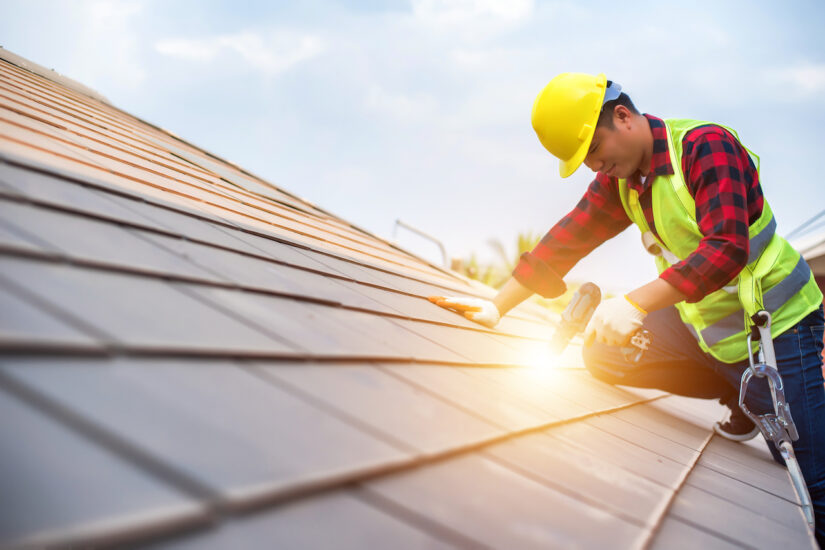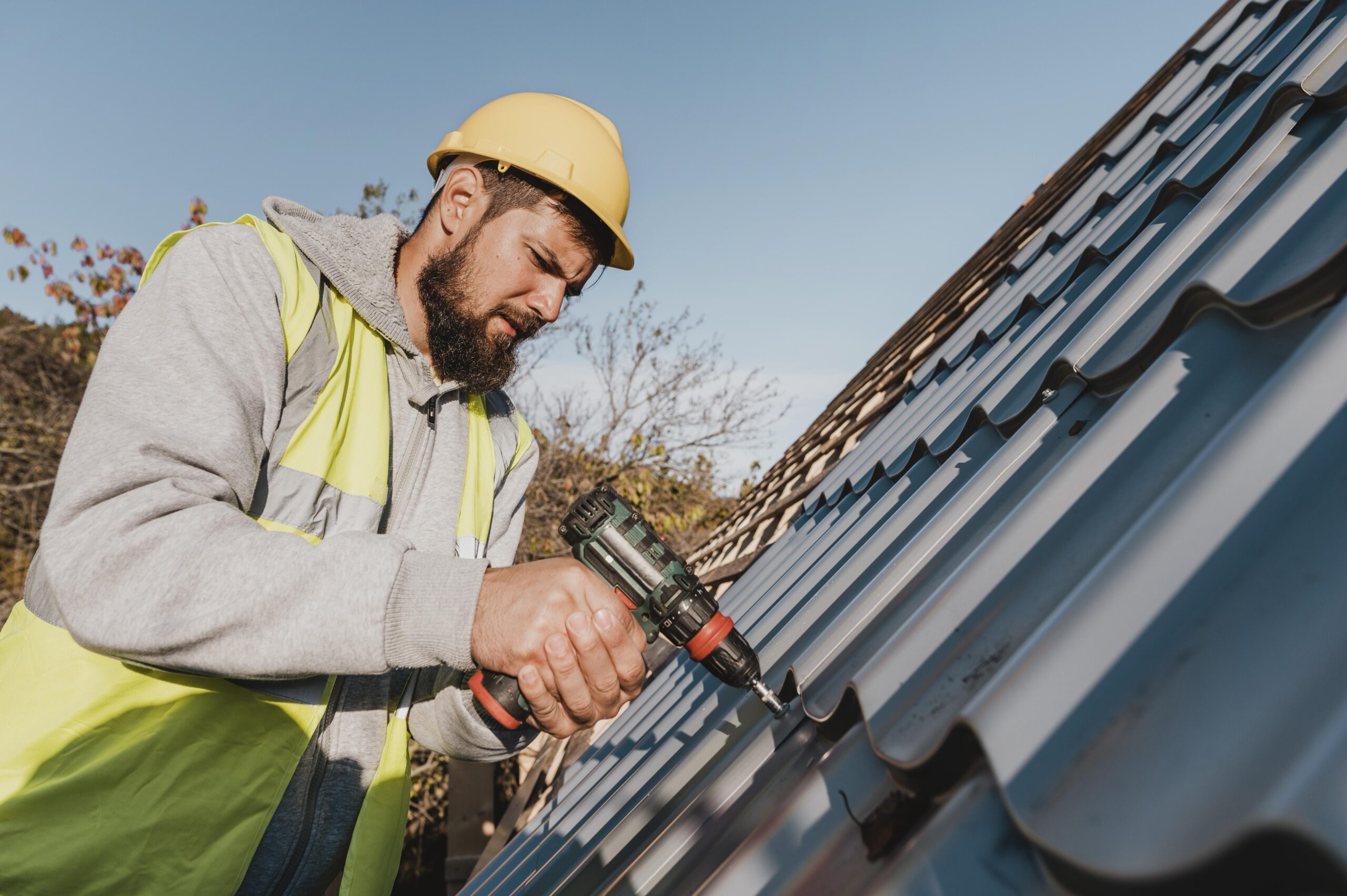Comprehending the Different Kinds Of Roofings: A Comprehensive Guide for Homeowners
With a range of alternatives-- ranging from the standard gable to the modern level-- each type provides one-of-a-kind advantages and difficulties that should align with the home owner's environmental considerations and details requirements. As we check out the ins and outs of various roof types, it ends up being obvious that one dimension does not fit all; the appropriate choice might stun you.
Gable Roof Coverings
Gable roofs, identified by their triangular form, are among the most preferred roof covering styles due to their simpleness and performance in dropping water and snow. This design features 2 sloping sides that meet at a ridge, permitting for reliable drainage and decreasing the risk of water buildup. The steep pitch generally connected with gable roofs boosts their capability to deal with hefty rainfall, making them appropriate for various climates.
In addition to their sensible benefits, gable roofing systems offer visual convenience. They can be adjusted to different building designs, from traditional to modern-day homes. The style can likewise suit added functions such as dormer windows, which enhance all-natural light and air flow in the attic room room.
Moreover, gable roof coverings offer ample room for insulation, adding to power efficiency. Property owners can select from a selection of roofing products, including asphalt shingles, metal, and tiles, additionally improving personalization options.
In spite of their benefits, saddleback roofs may need added support in areas prone to high winds or hefty snowfall. Generally, the saddleback roof continues to be a preferred option as a result of its mix of capability, durability, and aesthetic allure.
Apartment Roofs
Flat roof coverings are usually identified for their minimalist design and practical applications, specifically in commercial and industrial setups (oahu roofing). These roofs feature a almost straight or horizontal surface, which permits easy construction and functional area utilization. While they might do not have the visual charm of pitched roofing systems, level roof coverings supply various advantages, particularly in metropolitan environments where taking full advantage of area is vital
One of the main advantages of flat roof coverings is their availability. House owners can use the roofing room for numerous purposes, such as roof gardens, terraces, or solar panel installments. In addition, flat roofings are typically a lot more affordable to set up and keep compared to their sloped counterparts, as they need less products and labor.
Usual products made use of for level roofs include built-up roof covering (BUR), customized asphalt, and single-ply membranes, each offering distinct benefits. Generally, flat roof coverings serve as a functional and versatile selection for lots of house owners and companies alike.
Hip Roof Coverings
Hip roofs are characterized by their sloped sides that assemble on top, forming a ridge. This design stands out from gable roofs, as all four sides of a hip roofing system incline downwards towards the wall surfaces, supplying a much more stable framework. The angle of the inclines can differ, permitting for adaptability in architectural looks and functionality.
Among the primary benefits of hip roof coverings is their capacity to withstand heavy winds and negative climate condition. The sloped surface areas make it possible for better water drainage, reducing the threat of leaks and water damages. In addition, hip roofing systems use boosted attic area, which can be utilized for storage or perhaps transformed into livable areas.
Nonetheless, creating a hip roofing can be much more costly and complex than simpler roof covering kinds, such as saddleback roofs. The additional material and labor associated with producing the inclines and making sure proper structural stability can lead to higher costs. In spite of these drawbacks, many homeowners prefer hip roofings for their toughness, aesthetic appeal, and possibility for energy effectiveness.
Mansard Roofs
Mansard roofings, usually acknowledged by their distinct four-sided layout, function two inclines on important link each side, with the reduced slope being steeper than the top. This architectural style, stemming from France in the 17th century, is not just aesthetically appealing yet useful, as it makes best use of the usable area in the upper floors of a building. The steep reduced incline allows for more headroom, making it an optimal choice for attic rooms or loft spaces, which can be transformed into living rooms.
Mansard roofs are characterized by their flexibility, fitting different building designs, from standard to contemporary. They can be built with different materials, consisting of asphalt tiles, slate, or metal, offering home owners with a variety of choices to suit their preferences and budget plans. Furthermore, the layout permits the assimilation of dormer home windows, improving natural light and air flow in the upper levels.
Nonetheless, it is necessary to think about the possible downsides. Mansard roofings may require even more maintenance as a result of the complexity of their layout, and their steep inclines can be testing for snow and rainfall runoff. On the whole, mansard roofings combine beauty with functionality, making them a popular choice among home owners seeking distinct building functions.
Lost Roof Coverings
As homeowners significantly seek simpleness and performance in their architectural layouts, lost roofings have become a popular selection. Characterized by a single sloping aircraft, a shed roofing system provides a minimal visual that matches numerous home designs, from contemporary to rustic.
Among the primary benefits of a shed roofing is its simple building and construction, which commonly navigate to this site translates to lower labor and product costs. This layout enables effective water drain, minimizing the threat of leakages and water damages. Furthermore, the vertical incline provides sufficient space for skylights, enhancing all-natural light within the interior.
Shed roofing systems additionally use versatility in regards to use. They can be effectively incorporated into additions, garages, or outside structures like structures and sheds. In addition, this roof design can suit numerous roof covering products, including metal, asphalt roof shingles, and even environment-friendly roofs, lining up with green campaigns.
Nevertheless, it is necessary to take into consideration local climate conditions, as heavy snow lots might necessitate changes to the roof covering's angle or structure. On the whole, shed roofs present a sensible and visually pleasing alternative for home owners aiming to optimize performance without endangering design.
Final Thought


Gable roofs, identified by their triangular shape, are among the most preferred roof designs due to their simpleness and performance in shedding water and snow. oahu roofing. The steep pitch typically linked look at here with gable roofing systems enhances their capability to handle hefty precipitation, making them ideal for different climates
While they may lack the aesthetic appeal of pitched roofs, level roofings offer many benefits, especially in urban atmospheres where making the most of area is critical.
